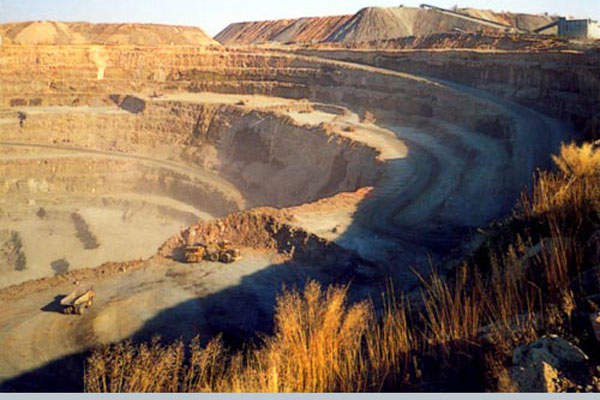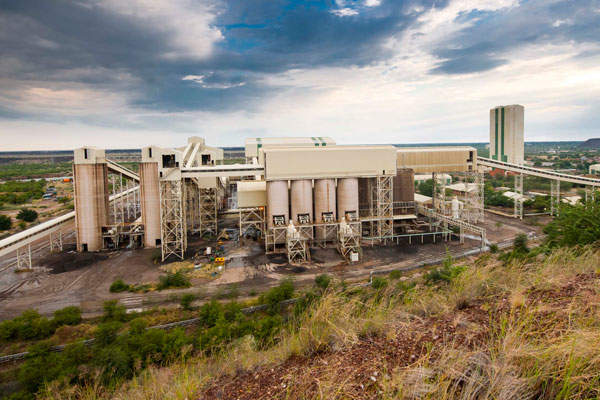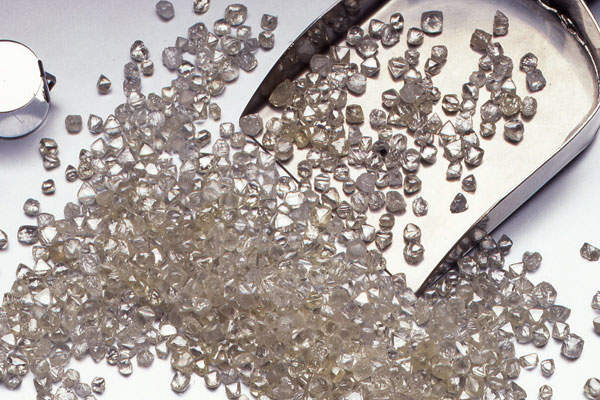Orapa mine is the ninth biggest diamond mine in the world. It is located in Orapa town of Boteti Sub-District, approximately 240km west of the city of Francistown, Botswana. It extends across a surface area of 118 square kilometres.
The Orapa diamond mine stands second among the world’s biggest diamond-generating kimberlite mines. It is made up of two separate pipes, which are believed to have formed approximately 93 million years ago.
It produces approximately 20Mtpa of ore and 40 million tonnes of waste per year.
Production of diamond at the Orapa mine commenced in July 1971. The mine treated 12.25 million tonnes of ore and produced approximately 11.08 million carats of diamonds in 2012. A record 17.3 million carats of diamonds were produced in 2006.
Debswana, a joint venture of De Beers and Botswana Government owns the diamond mine. The mining operations are expected to continue until 2033.
Orapa diamond mine geology and reserves
The Orapa kimberlite rock is part of the Karoo Super-group containing volcanic and sedimentary rocks. The Super-group lies above the Archaean granite and comprises of Stormberg-aged basalt lavas.
Orapa kimberlite pipe surface intersection is in ovoid shape measuring 1,500m long and 1,000m wide. The rocks are found to be of the late Cretaceous period – approximately 93 million years ago.
The mine’s reserves as of as of December 2012 were 85.7Mct graded at 58.69 carats per hundred tonnes.
Diamond mining at Orapa
Truck and shovel method of mining is applied at the open-cast mine. Mining is currently undergoing at the Cut 2 region. Ore from the mine is dumped into the trucks and taken to the processing plant.
The mine currently produces approximately 11 million carats (2,200 kg) of diamonds at a recovery rate of 0.87 carats per tonne.
Orapa resource extension project (OREP) phase two is expected to extend the depth of AK1 pipe from 265m to 475m below the ground level.
Processing plant at Botswana’s mine
Ore from the Orapa mine is treated at two treatment plants equipped with Dense Media Separation sections.
Concentrate is cleaned, dried and sorted at the Completely Automated Recovery Plant (CARP). The CARP also handles the concentrates of Letlhakane and Damtshaa mines along with the Orapa mine concentrate.
Concentrate from the CARP will be taken to Jwaneng for organic material removal and separation using the FISH technology. The concentrate will then go through the Central Acidising Centre for final processing and quality assurance.
The CARP uses 25 Siemens S7 400 programmable logic controllers along with Dry Chute X-ray machines (CDX) for sorting the diamonds.
Infrastructure and equipment at the African mine
The mining fleet of Orapa includes Caterpillar 789C and Komatsu 730E trucks with a capacity of 190 tonnes each. Water is supplied from the Mopipi dam. A storage dam to store excessive flow and treat the influent is also part of the mine.
A sludge sewage treatment reactor, including two sludge lagoons, is installed at the mine. Waste sludge is discharged into the lagoons for stabilisation and settling.
SiteMonitor slope monitoring system comprising of a laser scanner that scans up to 4,000m and a monitoring software is used at the AK1 pit.
Leica TCA2003 manual monitoring system is also installed, which helps in reducing the risk of injury to the miners.
Contractors involved with Orapa diamond mine
Barloworld Equipment was awarded the contract for supplying and servicing Caterpillar 789C trucks. The contract for supplying and servicing the Komatsu 730E trucks was awarded to Komatsu Botswana.
IMS Engineering was awarded supplied a primary gyratory crusher for the Orapa mine. Aurecon was the design and construction contractor for the 3.5ML/day sludge sewage treatment plant. Leica Geosystems was awarded the contract for conducting slope stability monitoring at the mine.
Related content
South Deep Gold Mine, South Africa
South Deep gold mine, in the Mpumalanga region of South Africa, is the second biggest gold mine in the world.
Jwaneng Diamond Mine, Botswana
Jwaneng diamond mine is situated in South Central Botswana, about 160 miles southwest of Gaborone. Debaswana, a partnership between De Beers Company and the Government of Botswana, owns the mine.







